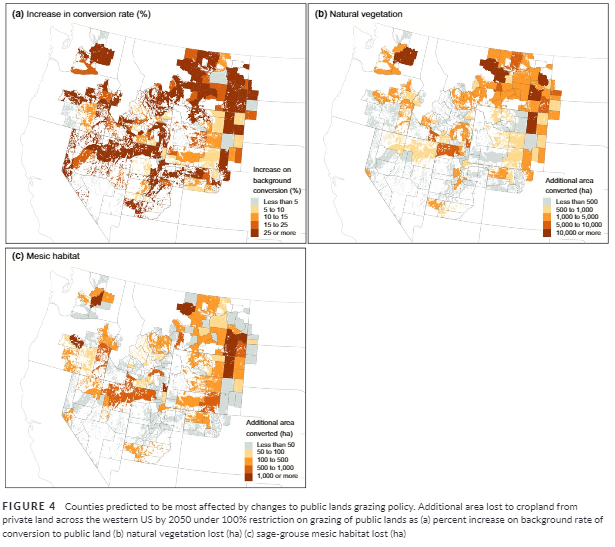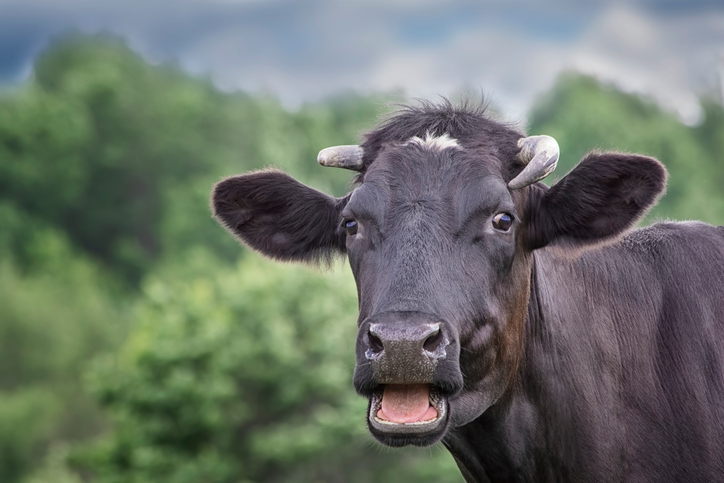Cows are awesome, and science proves it.
Some environmental groups attest otherwise, with legislative testimony earlier this year saying, “Grazing can have very significant environmental impacts, including water quality issues and other problems...”
What are some of those “other problems” created by grazing? Fire-suppression, increased native plant wildlife, improved biodiversity in riparian areas near well-managed grazing, and enhanced habitat for the native sage-grouse. These would be more accurately labeled “other benefits.”
Recent studies affirm that grazing is a positive aspect of Western ecosystems for both fire-suppression and sage-grouse habitat improvement. Rangeland scientists in Southeastern Oregon have shown for years that grazing early in the year helps reduce the fire risk later in the season, and also benefits native plants.
Rangeland scientist Kirk Davies notes, “We saw that long-term ungrazed areas, when they were burned, were subsequently invaded by exotic annual grasses. We found moderately grazed areas recovered to the native plant community. They didn’t have that invasion and were much better off. [In ungrazed areas] we found we had larger and hotter fires, and those fires caused higher mortality of desired native annual bunch grasses. We also found ungrazed areas were much more likely to ignite with an ignition source and more likely to spread …with higher flame heights and faster-moving fire.”
Researchers are now working with the Burns, Oregon Bureau of Land Management (BLM) to apply their findings on a broader landscape.
Another recent publication details how grazing improves the habitat of greater sage-grouse, a key indicator species in the West. The study finds that restricting grazing on public lands will hurt the sage-grouse. Researchers predict, “restricting grazing of public lands by 50% would result in the loss of an additional 171,400 ha of sage-grouse habitat on private lands by 2050, on top of the 842,000 [hectares] predicted to be lost under business as usual. “
As ranchers are restricted from public grazing lands, they must maintain smaller, less economical herds and concentrate existing herds on their private lands. Eventually, there is more value in selling their private land for other purposes, like row crops. This and other intensive land-uses are not favorable to sage-grouse territory and fragment the existing sage-grouse range.
Some claim grazing of public lands is even worse for sage-grouse species. This appears to be inaccurate and the evidence supporting this statement, according to researchers, is “perhaps surprisingly, currently obscure.” They note, “Though chronic overgrazing has multiple detrimental effects on sage-grouse habitat quality, studies suggest only a small fraction of BLM grazing allotments currently fail to meet existing standards due to livestock grazing.” Other findings support this conclusion, finding that removal of grazing will have no significant effect on sage-grouse populations.
For Washington state, these findings are even more important because many of our Eastern ranchers will be disproportionately pressured to convert their ranches to cropland. Our sage-grouse populations are already low and Washington rangeland is extremely valuable once converted to high-value, row crop farms. The findings from the study show that Eastern Washington sage-grouse are some of the most at-risk populations if public land grazing is restricted (see the map below).

With these findings, why do some environmental groups and our state legislature make it difficult to graze on public lands? A recent article in the Washington Post, claims that federal policy designed to ease grazing restrictions on federally-managed land in Idaho, Colorado, Nevada, Wyoming, and Utah is a buy-off for the “industry” and favors business interests over the sage-grouse. Most cow-calf and other grazing operations, however, are family-owned by ranch families who have been and are beneficial for their local environments.
This year, the state legislature also put up road blocks to practical changes in grazing management. House Bill 2175, sponsored by Representative Maycumber, would have authorized the Washington Department of Fish and Wildlife to use specific land management techniques, like grazing, without requiring the time-intensive and repetitive environmental impact statement. Unfortunately, for Washington state ranching families and our state’s biodiversity and fire safety, the bill failed to pass both chambers.
Washington state and other western states will be better off when we ease grazing restrictions, taking full advantage of our existing supply of “all-terrain management vehicles” aka – cows (and other grazing animals).




